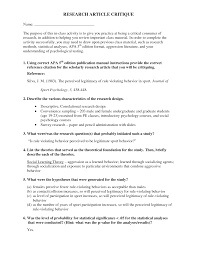
Economics and finance
Economics and finance
Order Instructions:
Please show working for the calculation question.
Need to be double spaced.
Thanks!
SAMPLE ANSWER
QUESTION 1
- An explanation on a stock split is and the reason given by Apple for doing this
Stock split is a decision made by a corporate entity to divide its shares held by shareholders into multiple shares. In a stock split the total value of shares remains unchanged even though the number of shares held by investors’ increases by a multiple number. For example, a given company can decide to split its shares into 2:1 i.e. for every one share held by an investor he would get an additional one share and would hence have two for every one share after the split (Kumar & Halageri, 2011). If an investor held 10 shares worth USD$1000 before the split he would own 20 shares worth USD $ 1000 dollars after the split. The market price of a company’s shares is divided uniformly. This implies that if the price per share was $100 before the split the new price per share after the split would be $50 per share. This is in a case of a stock split of 2 shares for every one share held. Apple Inc. announced a stock split of 7 to 1. This implied that for every one share held by an investor he received six more shares (Zuschlag, 2014). The decision by Apple Inc to execute the stock split was to increase accessibility of its shares in the market. Before the split Apple Inc’s shares traded at $525 per share but after the split, the stock price fell to $75 per share. The intention of the company was to increase the number of shares so as to have more investors taking advantage of increased shares in the market to by the company’s shares. The decision led to increase of the market capitalization as the price increased from$ 75 after the split (Seitz, 2014).
(b) The market’s reaction to Apple’s decision to split its stock
Apple Inc’s share increased after the split as the shares become more affordable and more investors were able to bid for them in the market. It was also said that Apple Inc would commit more of its cash into paying dividends which saw the stock price in the market increase(Zuschlag, 2014). The share price increased to around $130 per share within a short period after the stock split. The stock split also enabled the company to be listed on Dow Jones indices after it replaced electronics giant AT&T. Dow Jones list 30 of the biggest stocks in the market. Apple Inc had previously been excluded from Dow Jones indices because its stock price was too high and it was felt that it would distort the market(Zuschlag, 2014).
(c) An explanation on whether Apple was able to meet its objectives for splitting the stock
After the stock split Apple Inc’s share increased to $92 then they rose to $109.62 and then to $130 per share in subsequent days. The company was therefore able to achieve its objectives of enhancing the availability of its stock to more shareholders as its shares become more affordable. The company also saw its capitalization increase in the market and was able to be listed on Dow Jones indices as it replaced electronics giant AT&T (Zuschlag, 2014). The company was also expected to release a new product, iPhone 6, which also contributed to the increase in its stock price in the market. Apple shares became more attractive and accessible to retail investors after the split which led to an increase in the company’s stock price in the market. The chance to be added to the prestigious Dow Jones Industrial Average also boosted the company’s image and the reputation in the market which led to increase in stock price and a rise in market capitalization (Zuschlag, 2014).
Question 2
- See answer in the attached Ms Excel sheet.
- An assessment of the performance of JB Hi-Fi against the market as a whole for the past eleven years based on your results in Table 1
JB Hi-Fi is a chain store operation that was founded in 1974 in Australia. The company is headquartered in Melbourne in Australia. The company’s primary business is retail of consumer electronics’ but it also supplies video games, Blu-rays, DVDs and Compact Discs(Stewart, 2011). The company later diversified its business and currently is a leading retailer of a wide variety of consumer electronics which includes gaming consoles and accessories, in-car entertainment, computer/video games, white goods ( fridges and freezers), DVD and Blu-ray movies, Plasma and LCD televisions, CB-Radios, IP and fixed surveillance camera systems, musical instruments such as guitars, electronic keyboards, Ukuleles, microphones, etc. JB Hi Fi is currently the leading retailer of Apple computer hardware in Australia (Pan, 2010). The company is also the sole distributor of Dell computer hardware in all retail stores in Australia. In October 2003, the company was floated on the Australian Stock Exchange and currently trades under the code name JBH. The company has over 174 stores located in Australia and New Zealand. The company operates in the retail industry (Stewart, 2011).
There are various reasons as to why JB HI FI’s historical returns were different to the market returns. One of the main reasons could be performance announcements prior to end of a financial year. For example, in 2011 the company cut its profit guidance due to costs that were associated with its discount electrical retailing brand restructuring. The company forecasted that its profits would fall from budgeted figures of between $134 to 139 million to between $ 108.5 million to $112.45 million (Stewart, 2011). This kind of an announcement could have affected the company’s stock prices. It might have led to a rise in stock prices as investors prepared for better returns from the restructuring in future. Market returns could nevertheless not be affected by the performance of a single entity but if the economy in general is in a recession as it happened in the late 2000s, market returns would have been affected. The company returns could therefore be affected by a positive pronouncement on the company’s fundamentals whereas the market could not (Stewart, 2010). Market returns could not be affected by the good performance of a single company listed on the Australian Stock Exchange. The next reason that could have caused the difference was profit slips due to price wars. The company announced that its profit had slipped due to price wars from its rivals. That announcement could have impacted on its stock prices and hence its returns. The next reason could be the general discontent among employees (Stewart, 2011). For example, the New Zealand workers distributed leaflets to customers complaining about unfair treatment by the company. This action affected the returns of the company, while the market returns were largely unaffected by such an action. Staff changes especially top management personnel might have impacted on the company’s returns as compared to market returns (Stewart, 2011). The company’s stock prices could easily be influenced by positive pronouncements in mainstream media or favorable changes in the external environment. The performance of capital market is influenced by various factors. One of the factors could be the general performance of the economy. During the period, the Australian economy faced a slow down due to the sluggish world economy in recent years. This explains why market returns were not as impressive as those of JB Hi Fi’s returns. Stock market performance is based on the general performance of all listed companies and not on the performance of a single company. Therefore, if a large majority of companies listed on the stock exchange are performing poorly the good performance of one company will not affect the overall performance of the market (Lower, 2012).
(c) The decision to invest or not to invest in JB Hi-Fi Ltd
The best decision to make given an investment horizon of five years would be to invest in JB HI-FI stocks. One of the reasons is that the company’s returns are higher than the risk free rate of $2.71. An investor would earn more by investing in the company’s stocks than investing in treasury bills. The investor would make an additional 18.6% higher than investing in government bonds (Fitzsimmons, 2010). The other reason is that the company is growing and has been making profits over the years. There is a big chance that the company will be profitable in the next five years. The company is growing and has over 174 chain stores in its portfolio. This strategy will continue to generate revenues for the company. It would therefore be prudent to invest in the company’s stock (Fullerton, 2011). The next reason is that the company is the leading distributor for some of the largest companies in the world such as Apple Inc and Dell Computers. It is better to invest in stocks with lower returns than the market as that means that the company is operating in a growing economy and there is therefore an opportunity to grow in the future. JB Hi Fi is therefore operating in a growing economy which offers an opportunity for the company’s assets to grow during the duration of the new investment horizon of five years (Stewart, 2011).
Question 3
- Refer to the Excel work book which is attached to this report.
- (i) Valuation of stocks and the understanding of the tradeoff between risk and return form the basis for maximization of shareholder wealth. Every financial decision presents certain risk and return characteristics. The unique combination of risk and return determines the value of a management fund’s asset portfolio. There is a certain degree of uncertainty between actual returns and expected returns. This uncertainty is what is referred to as risk. Every financial decision could result in a financial loss. The greater the variability of expected return and actual return the greater the risk. The relationship does hold for given asset classes. The return of an asset is the gain or loss experienced over a given period on a class of assets (Isa & Yakob, 2013). Risk in investment denotes the chance that actual returns from an investment portfolio will be different from expected returns. There is a possibility that an investor can lose all of his investment or a large part of it. Asset portfolios associated with high returns have high risk while those with low returns are associated with low risk. The relationship does hold for asset classes in Table 2 in the Excel sheet. Asset classes with high degrees of standard deviation show that they are quite risky (Isa & Yakob, 2013). Risk and return is a useful tool in determining the composition of assets in a given portfolio. An investor using this strategy could choose to hold more of one asset and less of another based on risk and return analysis. The risk of any single asset investment is not viewed independently of the other assets in the portfolio but must be considered in light of risk and return of the portfolio of assets managed by the fund management company. A good fund manager would create an efficient portfolio that minimizes risk to achieve an expected return on a portfolio of assets (Isa & Yakob, 2013).
(ii) Diversification is a risk mitigation strategy that enables a fund manager to organize and combine assets in a manner that reduces risk and maximizes returns. Diversification enables a fund manager to minimize risk. This is because if an individual asset’s returns variability moves in one direction it is offset by variability in the opposite direction of other assets in the same portfolio. Diversification therefore reduces the impact of negative returns on a class of assets as that negative return is offset by positive returns on another class of assets (Hedegaard & Hodrick, 2014). If the securities in a portfolio are not positively correlated, then benefits of diversification in the form of risk reduction can be realized. The only way to reduce risk to a minimum is y combining assets with a negative correlation in returns. The correlation measures the degree to which expected returns move together (Fathi, Zarei & Esfahani, 2012). Assets that have a positive correlation imply that their returns move in the same direction. On the other hand assets that have negative correlation do not have returns that move in the same direction. There are normally two types of risks, namely un-diversifiable risk or systematic risk and diversifiable risk or unsystematic risk. Un-diversifiable risk is an uncertainty that affects the entire stock market segment. This type of risk is denoted by volatility in the market price of company’s stocks listed on a stock exchange. Factors such as interest rate fluctuations, recession or wars are classic sources of systematic risk. Unsystematic risk is a specific risk with a company or industry and can be reduced through diversification (Davidsson, 2011).
References
Davidsson, M. (2011). Expected return and portfolio rebalancing. International Journal of
Economics and Finance, 3(3), 15-25. Retrieved from http://search.proquest.com/docview/880882438?accountid=45049
Fathi, S., Zarei, F., & Esfahani, S. S. (2012). Studying the role of financial risk management on
return on equity. International Journal of Business and Management, 7(9), 215-221. Retrieved from http://search.proquest.com/docview/1017874947?accountid=45049
Fitzsimmons, W. (2010). JB hi-fi posts 29pc profit rise. Ultimo: Australian Broadcasting
Corporation. Retrieved from http://search.proquest.com/docview/189766642?accountid=45049
Fullerton, T. (2011). JB hi-fi records half-year profit. Ultimo: Australian Broadcasting
Corporation. Retrieved from http://search.proquest.com/docview/849503807?accountid=45049
Hedegaard, E., & Hodrick, R. J. (2014). Measuring the risk-return tradeoff with time-varying
conditional covariances. Cambridge: National Bureau of Economic Research, Inc. doi:http://dx.doi.org/10.3386/w20245
Isa, Z. b., & Yakob, R. b. (2013). Stock return and market risk: A comparison between
conventional insurance and takaful.African Journal of Business Management, 7(8), 591-597. doi:http://dx.doi.org/10.5897/AJBM11.416
Kumar, S. S. H., & Halageri, S. (2011). Impact of stock split announcement on stock price. Review of Management, 1(1), 15-32. Retrieved from http://search.proquest.com/docview/1326435547?accountid=45049
Lower, G. (2012, Aug 13). JB hi-fi profit slips amid price war. Wall Street Journal
(Online) Retrieved from http://search.proquest.com/docview/1033232985?accountid=45049
Pan, A. (2010). HSBC sees H-shares as a buying opportunity. Asiamoney, Retrieved from
http://search.proquest.com/docview/206620236?accountid=45049
Seitz, P. (2014, Jun 06). Will apple stock split give its shares a boost? Investor’s Business
Daily Retrieved from http://search.proquest.com/docview/1533432262?accountid=45049
Stewart, E. (2011). JB hi-fi bullish on profit forecast. Ultimo: Australian Broadcasting
Corporation. Retrieved from http://search.proquest.com/docview/883235899?accountid=45049
Stewart, E. (2010). JB hi-fi welcomes new chief executive. Ultimo: Australian Broadcasting
Corporation. Retrieved from http://search.proquest.com/docview/757873326?accountid=45049
Zuschlag, K. (2014, Apr 23). Apple soars following Q2 top & bottom line beat, stock split,
dividend raise, increased buyback.Benzinga Newswires Retrieved from http://search.proquest.com/docview/1544205288?accountid=45049
We can write this or a similar paper for you! Simply fill the order form!












